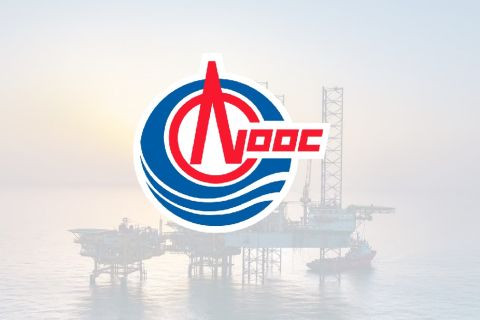Natural gas liquids (NGL) prices were up across the board at both hubs the final week of April. These increases improved frac spread margins at both Conway and Mont Belvieu. With dipping natural gas prices, the shoulder season is in full force. Indeed, natural gas prices fell 3% at both hubs due to mild weather that has seen cooling and heating demand stagnate in the early spring. The Conway price fell to $4.12 per million Btu (/MMBtu) and the Mont Belvieu price dropped to $4.23/MMBtu.
Prices should remain in the $4.00/MMBtu range this summer should normal weather persist, according to Barclays Capital. The investment firm did note that utilities have begun to switch back to coal as gas prices have improved, and this causes a little concern..
“While balances have tightened, the gas markets cannot afford to price out coal displacement all together, and we expect this dynamic to limit upside risks to prices during the summer season,” according to Barclays Capital’s Gas and Power Kaleidoscope for the week of April 30.
The largest price increase for any NGL the week of April 24 was Conway ethane, which rose 16% to 22¢ per gallon (/gal). This was lower than the average price for the product in each of the first four months of 2013. The Mont Belvieu price rose 4% to 29¢/gal, its highest price in a month.
Despite these positives, Wells Fargo Securities’ April NGL Snapshot noted that ethane prices are likely to remain depressed with limited upward mobility until new ethane crackers come online in 2017. “We project ethane to trade below its floor value (i.e., natural gas-equivalent price plus transportation and fractionation costs) during this period.”
While the industry anticipates an increase in ethane cracking capacity, the improvement in ethane prices this week was due to some capacity coming back online. The crackers returning to service were Williams’ Geismar facility along with ChevronPhillips’ three Sweeney crackers and Flint Hills Resources’ Port Arthur cracker. It should be noted that even with ethane prices improving, margins remained negative at Conway and only positive in the theoretical sense at Mont Belviu.
Mont Belvieu C5+ had the second-largest price increase of any NGL improving 6% to $2.09/gal, its highest price in a month. However, it remained lower than the Conway price for the ninth consecutive week. The Conway price rose 1% to $2.20/gal, which was also the hub’s highest price in a month.
These prices improved on the back of a nearly $5 per barrel (/bbl.) improvement for West Texas Intermediate (WTI) crude oil as the market reacted to Energy Information Administration (EIA) statistics that indicated crude stock levels increased at a lesser rate than expected. It is likely that this price increase will retract in the coming weeks judging by WTI prices decreasing in the days after this announcement.
The theoretical NGL bbl. price rose 3% at both hubs with the Conway price up to $38.67/bbl. with a 7% increase in margin to $23.61/bbl. The Mont Belvieu price rose to $40.37/bbl. with a 7% increase in margin to $24.92/bbl.
The most profitable NGL to make at both hubs remained C5+ at $1.75/gal at Conway and $1.62/gal at Mont Belvieu. This was followed, in order, by isobutane at 85¢/gal at Conway and 90¢/gal at Mont Belvieu; butane at 78¢/gal at Mont Belvieu and 84¢/gal at Conway; propane at 50¢/gal at Conway and 57¢/gal at Mont Belvieu; and ethane at negative 6¢/gal at Conway and 1¢/gal at Mont Belvieu.
The EIA reported that natural gas storage levels continued to experience slow increases for the injection season with a 43 billion cubic feet rise to 1.777 trillion cubic feet (Tcf) from 1.734 Tcf. This was 31% below the 2.572 Tcf figure posted last year at the same time and 6% below the five-year average of 1.895 Tcf. The injection should see an increase in the coming weeks due to coal displacement.
Storage levels are likely to be unaffected by the weather at least for the coming week as the National Weather Service’s forecast for the week anticipates normal temperatures in the Northeast. The forecast is anticipating cooler-than-normal temperatures in the Midwest and Gulf Coast, but they are unlikely to fall enough to cause a sizable increase in heating demand. There could be an increase in cooling demand from the West Coast, which is expected to experience much warmer-than-normal temperatures for this time of year in certain sections of the region.
Contact the author, Frank Nieto, at fnieto@hartenergy.com
Recommended Reading
CNOOC Makes Ultra-deepwater Discovery in the Pearl River Mouth Basin
2024-09-11 - CNOOC drilled a natural gas well in the ultra-deepwater area of the Liwan 4-1 structure in the Pearl River Mouth Basin. The well marks the first major breakthrough in China’s ultra-deepwater carbonate exploration.
Seadrill to Adopt Oil States’ Offshore MPD Technology
2024-09-17 - As part of their collaboration, Seadrill will be adopting Oil States International’s managed pressure drilling integrated riser joints in its offshore drilling operations.
US Drillers Add Oil, Gas Rigs for First Time in Four Weeks
2024-10-11 - The oil and gas rig count rose by one to 586 in the week to Oct. 11. Baker Hughes said the total count was still down 36 rigs or 6% from this time last year.
E&P Highlights: Sept. 9, 2024
2024-09-09 - Here’s a roundup of the latest E&P headlines, with Talos Energy announcing a new discovery and Trillion Energy achieving gas production from a revitalized field.
US Drillers Cut Oil, Gas Rigs for Third Week in a Row
2024-10-04 - The oil and gas rig count fell by two to 585 in the week to Oct. 4.
Comments
Add new comment
This conversation is moderated according to Hart Energy community rules. Please read the rules before joining the discussion. If you’re experiencing any technical problems, please contact our customer care team.



